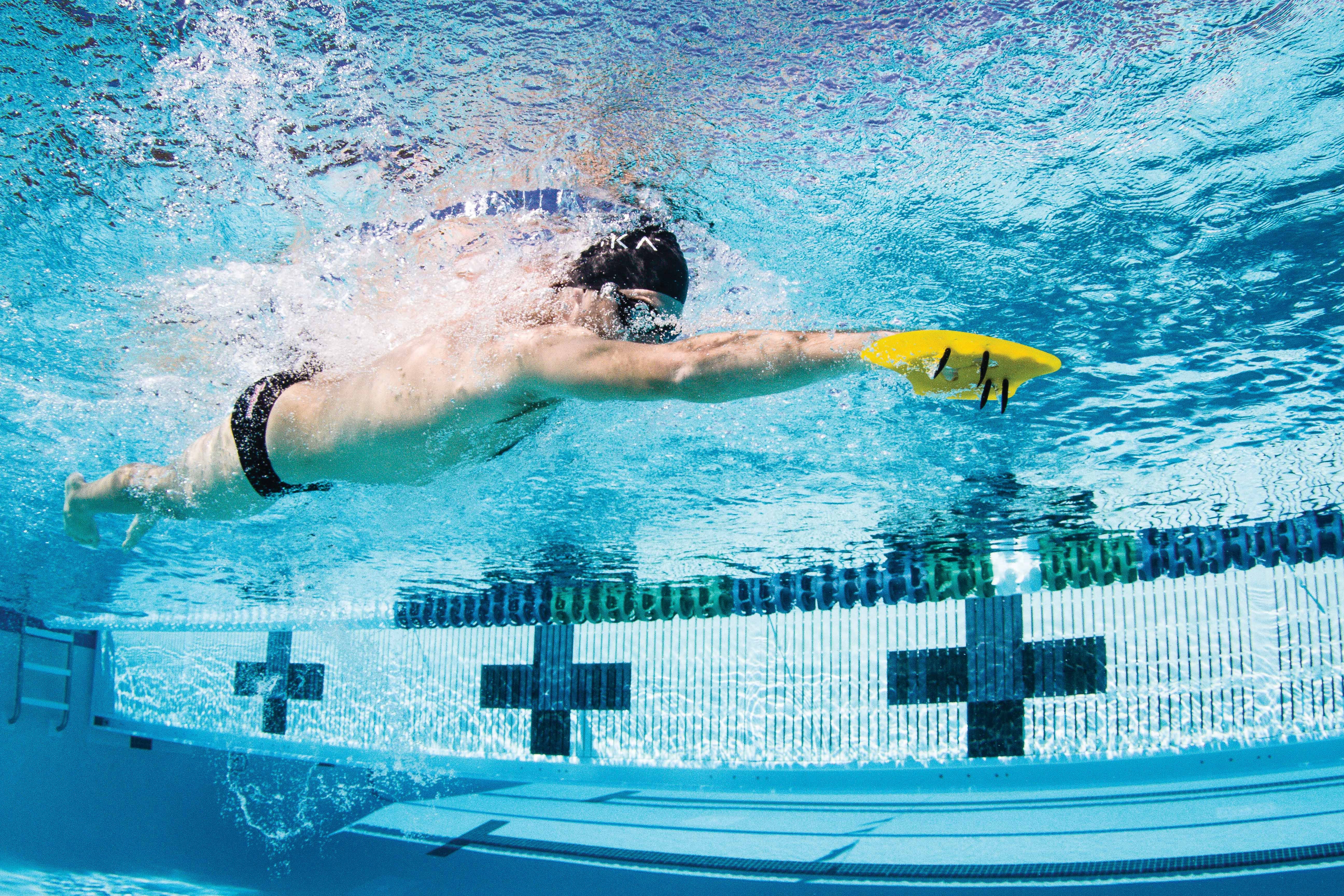The Proper Way To Add Paddles To Your Swim Training

Photo: John David Becker
Paddles are designed to increase the swimmer’s hand surface area, creating greater forward momentum when correctly pulled through the water. They are often used in tandem with a pull buoy to place more emphasis on the upper body by removing all propulsion from the legs. While paddles are useful for training, they can add additional strain on the shoulders and amplify any faulty mechanics in your stroke. Because of this, new swimmers should refrain from using paddles until they have at least two years of swim training under their belt. This will allow time for technique improvement and muscle adaptation before introducing paddles.
RELATED: How To Maximize Your Swim Block Training
Training goals
The goal is to slowly phase paddles into your training. Swim no more than 10 percent of your total yardage with paddles for the first 4 weeks. If you go a month with no shoulder pain, increase total yardage by 5 percent every additional month until you reach 25 percent of your total yardage.
Technique drills
Paddle balance
Place a single paddle against the top of your head; push off the wall and swim while keeping the paddle in place.
Advanced: Take normal breaths while maintaining paddle balance.
Purpose: It removes superfluous movements of the head and body and encourages constant propulsion.
Fist drill with paddles
Grasp the top of the paddles without using any straps and allow the paddle to extend along your forearm.
Purpose: This prevents wrist bend during the catch and pull phases and minimizes strain on the shoulders.
Remove the wrist strap
Attach the paddle to your hand with only a finger strap; swim as you would normally but notice if the paddles tend to slide sideways on your palms.
Purpose: To find any technique flaws in your underwater pull. If your hand faces any direction but straight back, your paddle will be pushed in the opposite way.
Sculling
Place your hands on your paddles but do not use any of the straps. Proceed with a regular sculling motion.
Purpose: Sculling helps develop a feel for the water and will support a strong catch. The paddles will only stay in place if you keep continuous pressure between your hand and the water, so it should be easy to detect any flaws in your sculling movement.
RELATED: How Often Should Swim Tools Be Used?
Pick the Right Paddles
Opt for a hand paddle that is just slightly wider than the palm of your hand. When worn correctly, the tips of your fingers should be within a half-inch of the top edge and the bottom edge of the paddle should sit at the wrist. Small holes around the paddle are useful for keeping a feel for the water.